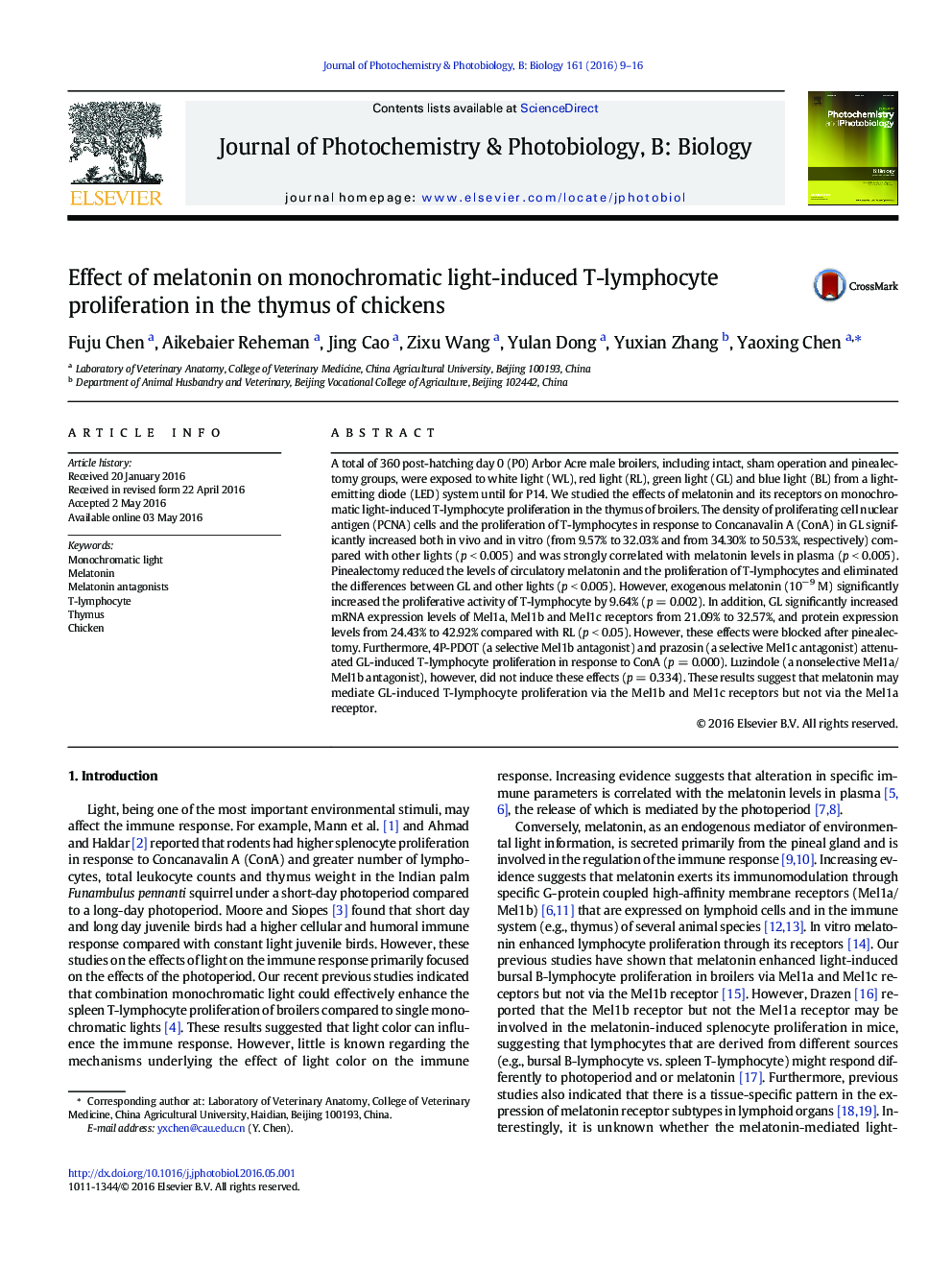| Article ID | Journal | Published Year | Pages | File Type |
|---|---|---|---|---|
| 6493637 | Journal of Photochemistry and Photobiology B: Biology | 2016 | 8 Pages |
Abstract
A total of 360 post-hatching day 0 (P0) Arbor Acre male broilers, including intact, sham operation and pinealectomy groups, were exposed to white light (WL), red light (RL), green light (GL) and blue light (BL) from a light-emitting diode (LED) system until for P14. We studied the effects of melatonin and its receptors on monochromatic light-induced T-lymphocyte proliferation in the thymus of broilers. The density of proliferating cell nuclear antigen (PCNA) cells and the proliferation of T-lymphocytes in response to Concanavalin A (ConA) in GL significantly increased both in vivo and in vitro (from 9.57% to 32.03% and from 34.30% to 50.53%, respectively) compared with other lights (p < 0.005) and was strongly correlated with melatonin levels in plasma (p < 0.005). Pinealectomy reduced the levels of circulatory melatonin and the proliferation of T-lymphocytes and eliminated the differences between GL and other lights (p < 0.005). However, exogenous melatonin (10â 9 M) significantly increased the proliferative activity of T-lymphocyte by 9.64% (p = 0.002). In addition, GL significantly increased mRNA expression levels of Mel1a, Mel1b and Mel1c receptors from 21.09% to 32.57%, and protein expression levels from 24.43% to 42.92% compared with RL (p < 0.05). However, these effects were blocked after pinealectomy. Furthermore, 4P-PDOT (a selective Mel1b antagonist) and prazosin (a selective Mel1c antagonist) attenuated GL-induced T-lymphocyte proliferation in response to ConA (p = 0.000). Luzindole (a nonselective Mel1a/Mel1b antagonist), however, did not induce these effects (p = 0.334). These results suggest that melatonin may mediate GL-induced T-lymphocyte proliferation via the Mel1b and Mel1c receptors but not via the Mel1a receptor.
Related Topics
Physical Sciences and Engineering
Chemical Engineering
Bioengineering
Authors
Fuju Chen, Aikebaier Reheman, Jing Cao, Zixu Wang, Yulan Dong, Yuxian Zhang, Yaoxing Chen,
